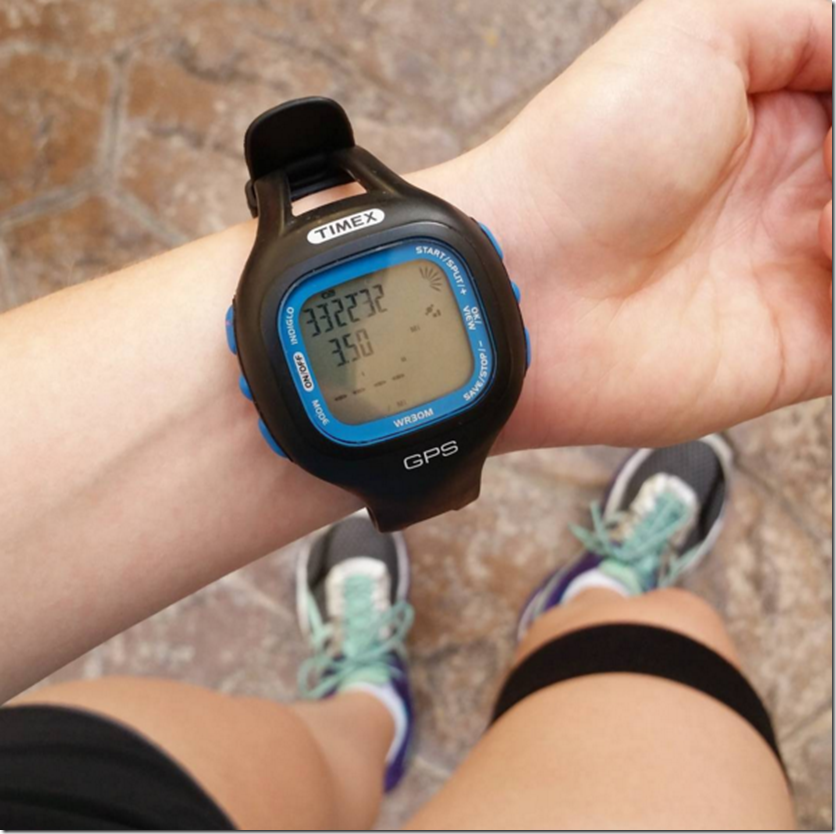I’m not.
Bahahaha. Ok, I kind of am. It has been a really weird process though. Since I’m always referencing my IT Band Syndrome, I figured I’d take some time to talk about what has worked and what hasn’t for me.

The condition is extremely common among runners, and I know that I, personally, have done plenty of Googling to find that magic cure advice. In case you’ve missed my constant talk about my running issues, here’s a quick recap:
- January 2015 – I started training for my second marathon (I was being sponsored by ASICS to run). I went too hard, too fast; I didn’t stretch nearly enough; and while I was ready mentally, I was not there physically. I got to the point where I couldn’t even make it a mile before my knee hurt like woa, causing me to limp on the walk back to our house. I reluctantly dropped out of the race.
- All of 2015 – I would try running a mile maybe once every two months to see if there was any change. I never saw any improvement. I tried religiously stretching and foam rolling every day, as well as resuming a workout schedule – no change.
- December 2015 – I was fed up with going an entire year without being able to run one stinking mile, so I finally did it – I made an appointment with a sport medicine doctor. As suspected, I was diagnosed with Iliotibial Band Syndrome. She referred me to a physical therapist.
- December 2015 – March 2016 – I went to physical therapy twice a week. This consisted of a set of stretches that challenged the calves, hamstrings, quads, glutes, hips, etc. Then she’d work on my right/problem leg, kneading out any tight spots. Then she’d have me go through specific exercises to strengthen the supporting muscles around the knee and IT band. I saw slight improvement but could never make it past three miles before pain would set in. We decided to stop physical therapy (since it was costing me an arm and a leg), and I’m continuing with stretching and doing these leg exercises about twice a week.
- April 2016 – And here we are! I’ve had some high highs and very low lows. My quest to recover from IT Band Syndrome has been a rollercoaster, physically and mentally. At this exact moment? I’m feeling optimistic. It’s definitely not always like this though. Here is why I’m feeling okay about my progress (and why I wasn’t just three weeks ago):
What Has Worked for My ITBS Recovery
FYI, there is a lot of conflicting advice out there for how to cure yourself of IT Band Syndrome. You may agree or disagree with what I’m about to say, and that’s fine. I’m just here to share what I think has helped my chronic problem. At the very least, I hope this will help some people learn what has helped me see progress after a year of no DIY strategy working.
Foam rolling. This is such a simple (though painful) task, and I don’t do it nearly enough. However, I’m always reading how foam rolling is a major help for ITBS, but you have to be persistent about it. I’ve gotten a textured foam roller, and while it’s better than my last one, it’s still not dense enough to dig into my legs well enough. This is a major area where I’m trying to up my game, because I really do believe this has helped prepare my legs for running again.
Lower Body Exercises. This was a huge focus of my physical therapy. Why? Because a factor that may exacerbate ITBS is muscle imbalances or weaknesses, especially in the glutes. So I have a stack of exercises that my PT gave to me when I left (lunges, lunges, and more lunges). I perform the entire list about twice a week.
Stretching. This goes hand-in-hand with foam rolling. When you consistently stretch, you’re helping care for the muscles that influence how you move. I mostly blame the lack of stretching after my demanding marathon training runs for developing ITBS. That plus a month of no workouts before starting the unrealistic training schedule = injury. (I never said I was smart.)
IT Band Compression Wrap. This. This magical device is what gives me all my hope. I bought this one off Amazon a couple months ago, but when I mentioned it to my PT, she seemed hesitant and didn’t encourage me to use it since it altered the way my body was moving. (So it’s more like I’m using a crutch than solving the problem.) She recommended KT tape as an alternative, but honestly, the world of kinesiology tape intimidates me because I don’t understand it. (I may look into it depending how my ITBS journey continues.) BUT, okay, let’s discuss this band. After a few too many absolutely miserable, defeating runs, I decided to try out the band as a last resort – one last test before I considered life without running. It worked. You guys, it totally worked. I reached three miles no problem (which had become increasingly difficult because of knee pain happening earlier and earlier). I’m not thrilled that I need to wear this because I want to treat my ITBS for good. But honestly? I don’t even care at this point in time. This allows me to run. This allows me to increase my mileage, little by little. The band goes a few inches above my knee. There’s a section that pushes into the right side of my thigh. It’s designed to keep my IT band from rubbing and causing pain. I’ve been wearing this for my longer run every week. For my other run (I’ve been going twice a week), I run without the aid, just to see where I’m at. This is helping me remain hopeful, and while many professionals may discourage long-term use of it, I find this is extremely helpful as I continue to work on my ITBS. The pic below is my latest run – the longest run I’ve had in over a year. [*Cries happy tears*]

What Has NOT Worked for My ITBS Recovery
Treating It on My Own: I tried. I tried so hard for a year. Nothing worked. I’m so happy I saw a doctor and physical therapist to do what I could to find a solution, instead of moping around and giving up. Although I’m really disappointed I didn’t see more significant progress while going to PT regularly, I’m doing what I can to implement her suggestions and keep moving forward.
Expecting Every Run to Be a Good One: They can’t all be winners. It’s truly amazing just how disappointing a single run can be, though, so I get the feeling hopelessness. If you expect to see progress on every run, you’re probably emotionally doomed. Haha. I’m just being honest. My advice: take it one run at a time; stick with your strategy; and seek a professional’s help if you don’t get very far (I’m punny).
And just to remind everyone: I’m not an expert on treating IT Band Syndrome, so take all of this with a grain of salt. What works for one person may not be the best for another person. However, I think learning about what helped some runners can give you ideas of what you may need to improve upon.
Best of luck if you’re dealing with ITBS or any injury that is keeping you from running. It is NOT fun.
Also, my apologies for apparently writing a novel. Once you get me started on this topic, I can’t stop.
I’ll try to keep sharing updates periodically so those who care will stay informed. 🙂


![Vi Fuel Review + Giveaway [Closed]](https://gettinmyhealthyon.com/wp-content/uploads/2013/01/0120131335-150x150.jpg)


I’m glad you shared on this because it is really common. I had a few IT flare ups during marathon training, and in general have a TON of knots in my IT band all the time but it really doesn’t bother me. My husband has it really bad though and was not okay for months after our marathon. Foam rolling was good but hurt so bad that he didn’t do it much. He did PT and I think it helped some. He has really long femurs so was told that he’s even more prone to it than others, which stinks.
I really hope your road to recovery is coming to an end. I know you’ve been more than patient throughout this process!
Aww thank you for your kind words. 🙂 It’s amazing how many people suffer from IT band syndrome. I figure if so many others can live with a finicky band, maybe I can find some sort of relief as well. Hope your husband is able to keep his finicky IT band under control too! Suuuuuch a pain.